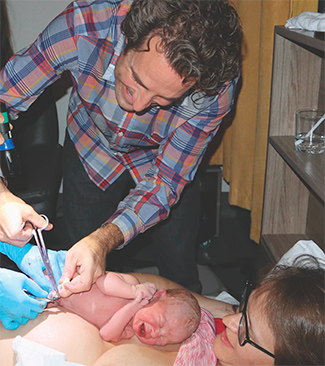Third stage: Delivery of the placenta

![]() Usually, the father or partner will be invited to cut the umbilical cord.
Usually, the father or partner will be invited to cut the umbilical cord.
Your baby is born, but the delivery isn’t over yet. Contractions will continue for a little while longer to deliver the placenta.
After the placenta is delivered, your uterus will continue to contract to prevent hemorrhages and to regain its original shape. If you breastfeed, your baby’s first few feedings will stimulate the production of oxytocin, a hormone that increases contractions of the uterus.
If the contractions aren’t strong enough, there is a risk of hemorrhaging. In this situation, treatment consists of massaging the abdomen at the uterus to stimulate it to contract, or giving oxytocin as a medication.
Hemorrhage: Heavy bleeding.
Oxytocin: A hormone produced by a gland within the brain. Oxytocin circulates in our blood, causing uterine contractions during childbirth and the expulsion of breast milk.


